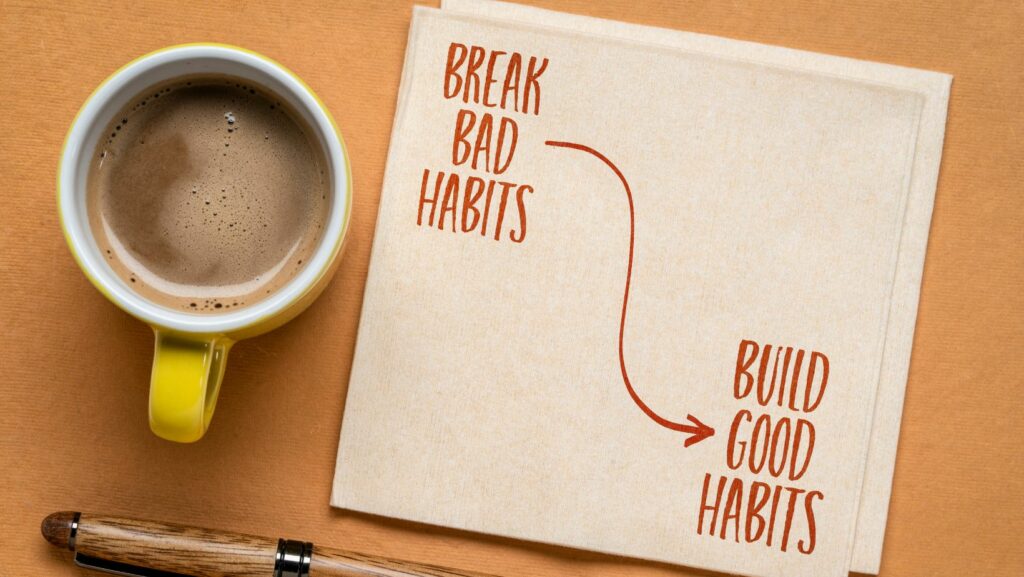Building lasting habits can transform lives, and understanding the process is key. James Clear, the author of the bestselling book “Atomic Habits,” breaks down james clear 4 stages of habit formation: cue, craving, response, and reward. Each stage plays a crucial role in how habits are formed and sustained, offering a roadmap for anyone looking to make positive changes.
By exploring these stages, individuals can identify where they struggle in their habit-building journey. Whether it’s recognizing triggers or reinforcing positive behaviors, Clear’s framework provides actionable insights. This article delves into each stage, empowering readers to take control of their habits and ultimately enhance their daily lives.
James Clear 4 Stages of Habit Formation
James Clear 4 stages of habit formation model consists of four distinct stages: cue, craving, response, and reward. Understanding each stage aids in building effective habits.
- Cue: The cue acts as a trigger, initiating the behavior. It can be an external stimulus, like a time of day, or an internal feeling, such as stress. Recognizing cues helps individuals identify what prompts their habits.
- Craving: Cravings represent the desire for a change or a reward that follows the habit. It’s the motivation behind the behavior. By understanding cravings, individuals can target the underlying wants driving their habits.
- Response: The response comprises the actual behavior performed after the cue and craving. It reflects the action taken. Enhancing this stage involves making the behavior easy to perform and accessible in daily life.
- Reward: The reward is the positive outcome following the response. It reinforces the behavior, promoting repetition of the habit. Clear emphasizes the significance of immediate satisfaction, as it enhances the likelihood of habit formation.
By analyzing these stages, individuals can uncover their habit-building obstacles while developing strategies to overcome them.
The First Stage: Cue
The cue serves as the initial trigger that sets the habit formation process in motion. Recognizing cues enables individuals to understand what prompts their behaviors.
Understanding Cues
Cues can be categorized as external stimuli or internal feelings. External cues include specific environments, social interactions, or time of day. Internal cues arise from emotions, thoughts, or physical sensations. Identifying these cues provides insight into why certain habits occur. The better individuals understand their cues, the more effectively they can influence their habits.
- Environmental Cues: Items or settings that prompt behavior, such as seeing running shoes encouraging exercise.
- Temporal Cues: Specific times that trigger habits, like morning coffee rituals.
- Social Cues: Interactions or presence of others that influence habits, such as engaging in healthier eating when dining with friends.
- Emotional Cues: Feelings that lead to habits, such as stress triggering the urge to snack.
Identifying the types of cues plays a essential role in habit formation, as understanding these triggers allows for better control over behaviors.
The Second Stage: Craving
Cravings drive the desire for change and play a critical role in habit formation. They create the motivation that pushes individuals to engage in specific behaviors.
The Role of Motivation
Motivation directly influences cravings, as it shapes the urgent need for a change or reward. Strong cravings prompt individuals to pursue habits that fulfill these desires. Various factors impact motivation, including:
- Intrinsic Motivation: Personal satisfaction from completing a task drives engagement.
- Extrinsic Motivation: External rewards, such as recognition or material gains, boost desire.
- Social Influence: Group dynamics or peer pressure can enhance motivation levels.
By understanding what fuels motivation, individuals can identify sources that amplify their cravings, creating a powerful impetus for habit formation.
Transforming Cravings into Action
Transforming cravings into action involves a calculated approach to decision-making. Individuals can adopt strategies to convert strong desires into tangible habits through the following steps:
- Identifying Triggers: Recognizing specific situations or stimuli that evoke cravings helps set a clear path for action.
- Setting Clear Intentions: Establishing concise goals, like “I’ll exercise three times a week,” gives direction.
- Creating Implementation Plans: Formulating plans for when, where, and how to act on cravings increases the likelihood of following through.
By actively addressing cravings with defined steps, individuals can effectively bridge the gap between desire and action, enhancing their habit formation process.
The Third Stage: Response
The response stage represents the execution of the behavior prompted by the cue and craving. Prioritizing simplicity enables individuals to adopt habits more easily.
Creating Effective Responses
Creating effective responses involves making habits easier to perform. Clarity plays a critical role. Individuals should define their desired actions explicitly. For example, someone looking to exercise might specify, “I’ll walk for 30 minutes after dinner.” This clarity removes ambiguity and prompts immediate action.
Simplicity is crucial. Individuals should break down complex behaviors into smaller, manageable steps, enhancing the likelihood of action. Implementing tools such as habit trackers can provide structure and motivation. Additionally, maintaining consistency boosts the effectiveness of responses; routine reinforces the association between cues and actions.
Overcoming Barriers to Action
Overcoming barriers to action often requires identifying obstacles. Common barriers include lack of time, limited resources, or inadequate motivation. Recognizing these hurdles enables individuals to devise strategies to address them directly.
Setting deadlines and accountability measures can enhance commitment. Engaging with a support system, such as friends or family, encourages motivation and provides external reinforcement. Adjusting the environment to eliminate distractions can significantly improve focus on the desired actions.
Using visualization techniques also aids in overcoming barriers. Imagining the successful completion of a habit can enhance confidence and commitment. By actively addressing and mitigating these barriers, individuals can strengthen their responses and move closer to building lasting habits.
The Fourth Stage: Reward
The reward stage completes james clear 4 stages of habit formation. It directly influences whether a behavior becomes a sustainable habit. Rewards provide immediate satisfaction, reinforcing actions and making them more likely to recur.
The Importance of Rewards
Rewards create a positive feedback loop that solidifies habits. They serve as incentives that fulfill cravings, providing gratification that motivates individuals to repeat behaviors. Immediate rewards, such as feeling energized after a workout or enjoying a treat after completing a task, enhance the likelihood of habit consistency. The brain releases dopamine in response to rewards, creating a pleasure association with the behavior. Recognizing the value of these immediate benefits encourages individuals to engage in habits repeatedly.
Reinforcing Positive Habits
Reinforcing habits involves strategically integrating rewards into daily routines. Clear suggests using small, immediate rewards to reinforce positive behaviors effectively. Examples include treating oneself to a favorite snack after a workout or enjoying a moment of relaxation after completing a task. Building a reward system enhances motivation and provides momentum for ongoing habit development. Tracking progress, such as maintaining a journal or app, also serves as a rewarding experience, enabling individuals to celebrate their achievements. Ultimately, these practices contribute to long-term habit adherence and success.
Powerful Framework
Understanding James Clear’s four stages of habit formation provides a powerful framework for anyone looking to build lasting habits. By recognizing cues and cravings individuals can better navigate their motivations and responses. Simplifying actions and addressing barriers enhances the likelihood of success.
Incorporating immediate rewards solidifies these behaviors, creating a positive feedback loop that encourages consistency. With this knowledge in hand individuals are equipped to take charge of their habits and transform their daily lives. Embracing this process can lead to meaningful change and personal growth.



